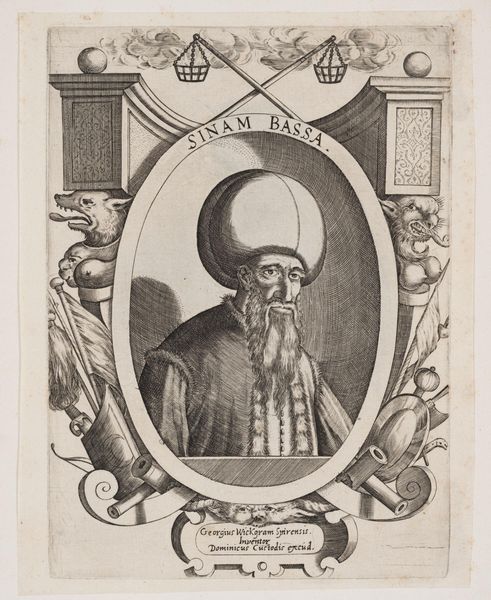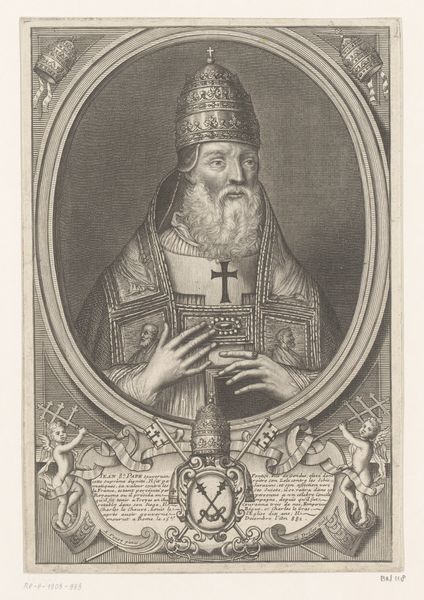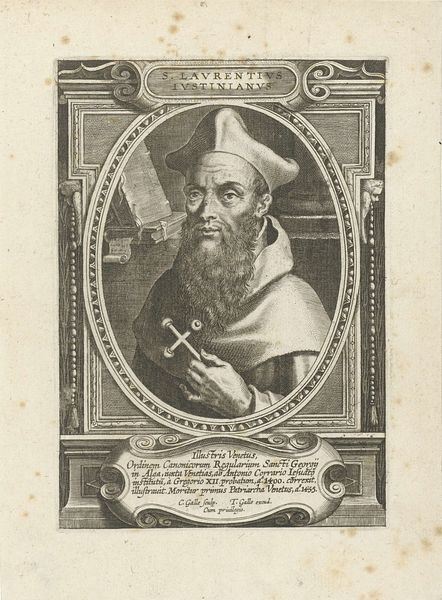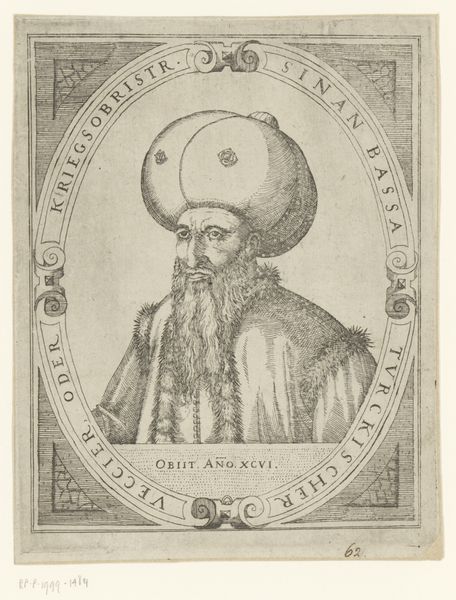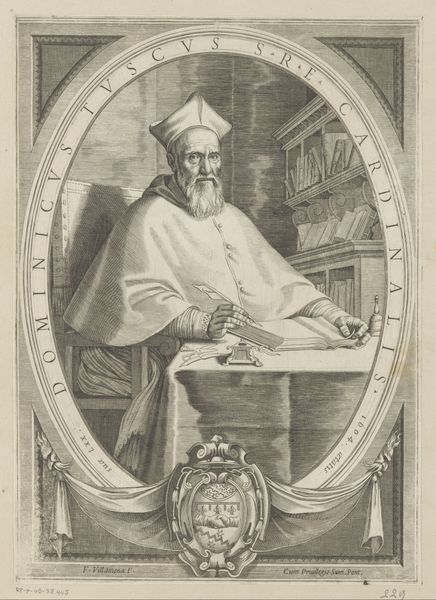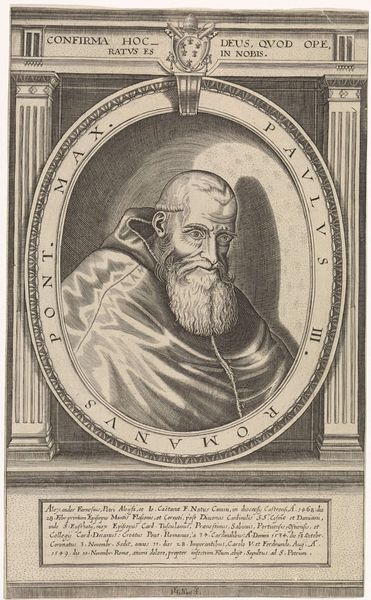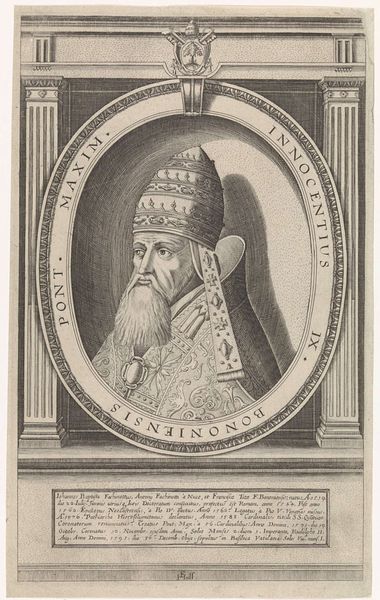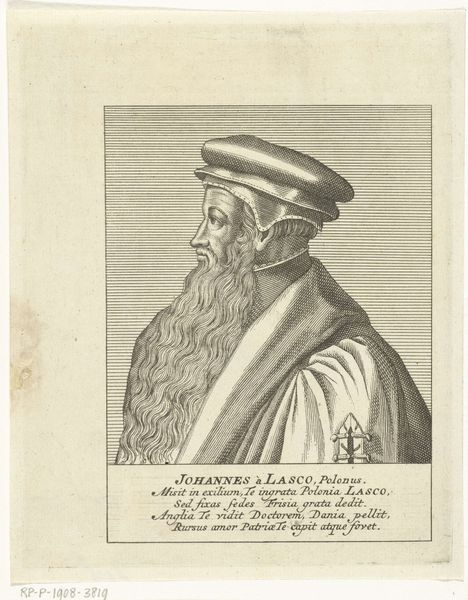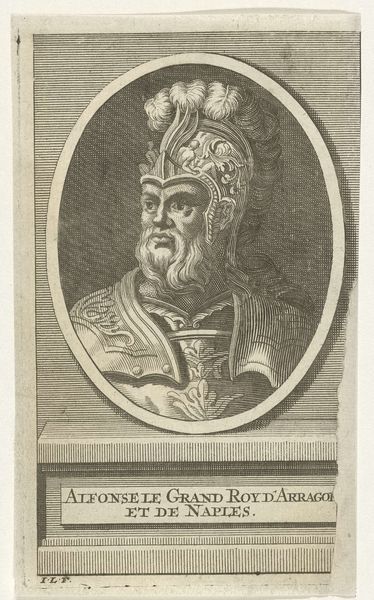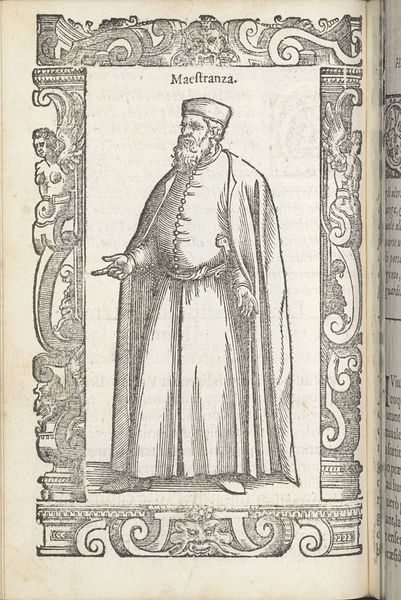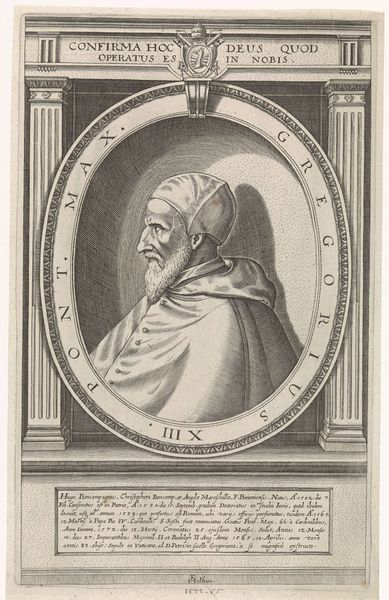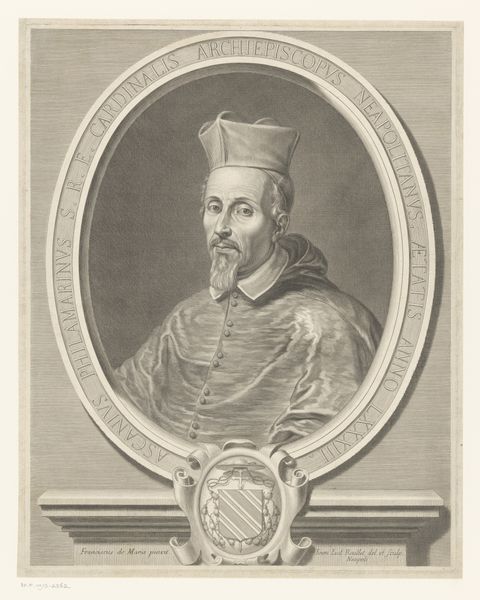
print, engraving
#
portrait
# print
#
old engraving style
#
history-painting
#
engraving
Dimensions: height 109 mm, width 75 mm
Copyright: Rijks Museum: Open Domain
Curator: This engraving, made between 1783 and 1795, is a portrait of Bonifatius, the second bishop of Utrecht. The artist is Reinier Vinkeles. It’s quite a detailed print, even for its age. What’s your immediate response to it? Editor: Somber. It's a somber, formal, historical piece. The severe face of Bonifatius, coupled with the sword, the book... they hint at a complex, weighty narrative. Curator: The composition reinforces that weight. We have Bonifatius himself, framed within a circle, and below, the arrangement of objects: a sword, a book, and what appears to be a liturgical fan or flabellum, all resting on or against a plinth-like structure. Editor: Absolutely. The flabellum immediately caught my attention; it speaks to ritual and status. And the book, prominently displayed and fastened shut, paired with the sword… are they indicators of the limitations of faith or perhaps the active struggle it sometimes demands? Curator: It’s an interesting duality. The book, usually a symbol of knowledge and peace, is here juxtaposed with the sword, an emblem of power and conflict. The artist uses stark lines and contrasting textures to draw the eye to these symbolic items. There's a fascinating contrast between the organic depiction of Bonifatius' face and the geometrical framework containing him and the still-life elements. Editor: Yes, notice how the engraving technique renders Bonifatius’ beard; it’s almost tactile. But I am particularly drawn to the inscription encircling him, almost like a halo, placing him within a defined historical and religious framework. Curator: Indeed. It’s an inscription that both identifies and monumentalizes him. The artist is placing Bonifatius, both visually and symbolically, within the established religious order, framing his image in historical and iconographic importance. What do you make of that 'ID4' in the upper right corner? Editor: It almost seems like an inventory marker—like an annotation superimposed by another. Ultimately, I see a work exploring power dynamics through faith, force, and historical perception. Curator: A fascinating consideration of visual oppositions that also encapsulates a critical period in religious history. Thanks for sharing. Editor: Thank you; it’s these layers of visual language that truly resonate over time.
Comments
No comments
Be the first to comment and join the conversation on the ultimate creative platform.
